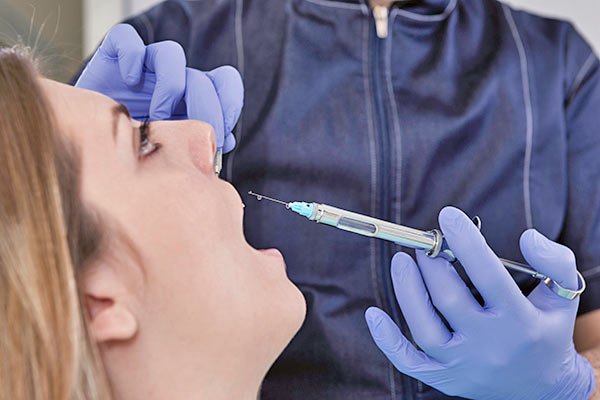
The last thing you should worry about is your comfort at the dentist. Pain causes anxiety and not only makes the experience unpleasant but also makes the dentist’s job harder too. That’s where dental anesthetics come in. Dentists use a variety of anesthetics and numbing agents to help reduce the sensitivity to pain during a procedure. So, what are your options? Here are the dental anesthetics commonly offered:
- Numbing gel: This option is typically used for short-term, light numbing of an area in the mouth. The solution is not strong enough to reduce pain completely, but it allows for pain-reduction while a more powerful injection is administered.
- Laughing gas (Nitrous Oxide): Laughing gas is often used for children to calm the anxiety surrounding the procedure. The nitrous oxide is mixed with oxygen and breathed in through the nose. The child remains awake during the procedure, but significantly less nervous. After the procedure is done, the gas wears off quickly and the dentist will give the child oxygen to flush any remaining gas in the system.
- Local anesthesia: Local anesthesia is a numbing solution injected into the gum or inner cheek to reduce paid. Lidocaine is typically the drug of choice for dentists, however, there are other varieties used. The local anesthesia solution is a combination of the numbing drug, and other solutions used to boost the effectiveness and help the numbing agent last.
- Conscious sedation: Conscious sedation is used to reduce anxiety and nervousness surrounding a dental procedure. There are two options of conscious sedation delivery.
- Via pill: The pill is typically provided an hour before the procedure begins. Depending on the dosage, the pill will induce drowsiness or cause a patient to fall asleep during the procedure.
- Via injection: Injections are not used as often for conscious sedation and require proper monitoring and extensive training.
- General anesthesia: General anesthesia is a technique used to sedate a patient for an extended period. While sleeping under general anesthesia, an air tube is used to allow breathing. General anesthesia provides a specific source of comfort during the procedure and is typically administered by a dental surgeon or a medical anesthesiologist.
How Long Do Dental Anesthetics Last?
Patients who receive local anesthesia generally see the effects last between 1-4 hours. However, with other procedures, the effects can last for up to a day. If the effects last an unusually short or long amount of time, alert your doctor.
Side Effects or Complications of Anesthesia
Although it doesn’t occur often, some side effects could stem from dental anesthetics. These side effects may include the over-relaxation of facial muscles, hematoma or bruising in the area the procedure was done long-lasting numbness and numbness outside of the area in which the procedure was performed.
Studies have shown that dental anesthetics are safe for use by pregnant women. As always, it is advised that pregnant women consult with their doctor prior to the procedure.
Your Comfort and Care is Our #1 Priority
We know that dental procedures can be a source of anxiety for many and we want to make the process as stress-free as possible. Talk with our Pointe Dental Group team to discuss options available to reduce the discomfort and pain that may be present during the procedure. We offer clean, comfortable offices for your convenience in two locations, Grosse Pointe and Shelby Township.
Contact Pointe Dental Group
Pointe Dental Group can provide you with a complete examination, answer your questions, and discuss your treatment options. Schedule an appointment with us today! New patients can receive FREE comprehensive exam and consultation, plus a full panoramic x-ray with a paid cleaning procedure (a $200 value)!
Grosse Pointe Farms: (313) 881-2480
Shelby Township: (586) 803-8300
Don’t miss a thing! Connect with us on Facebook!
